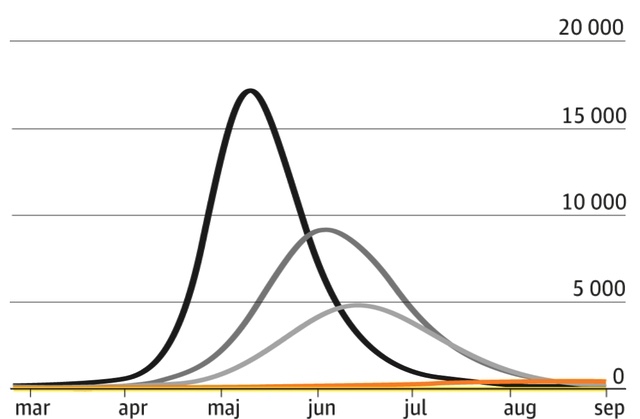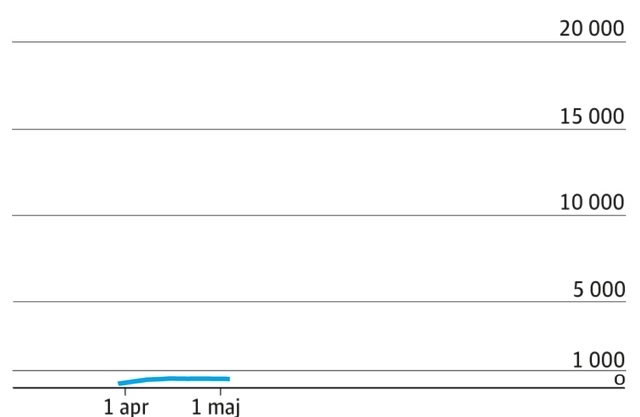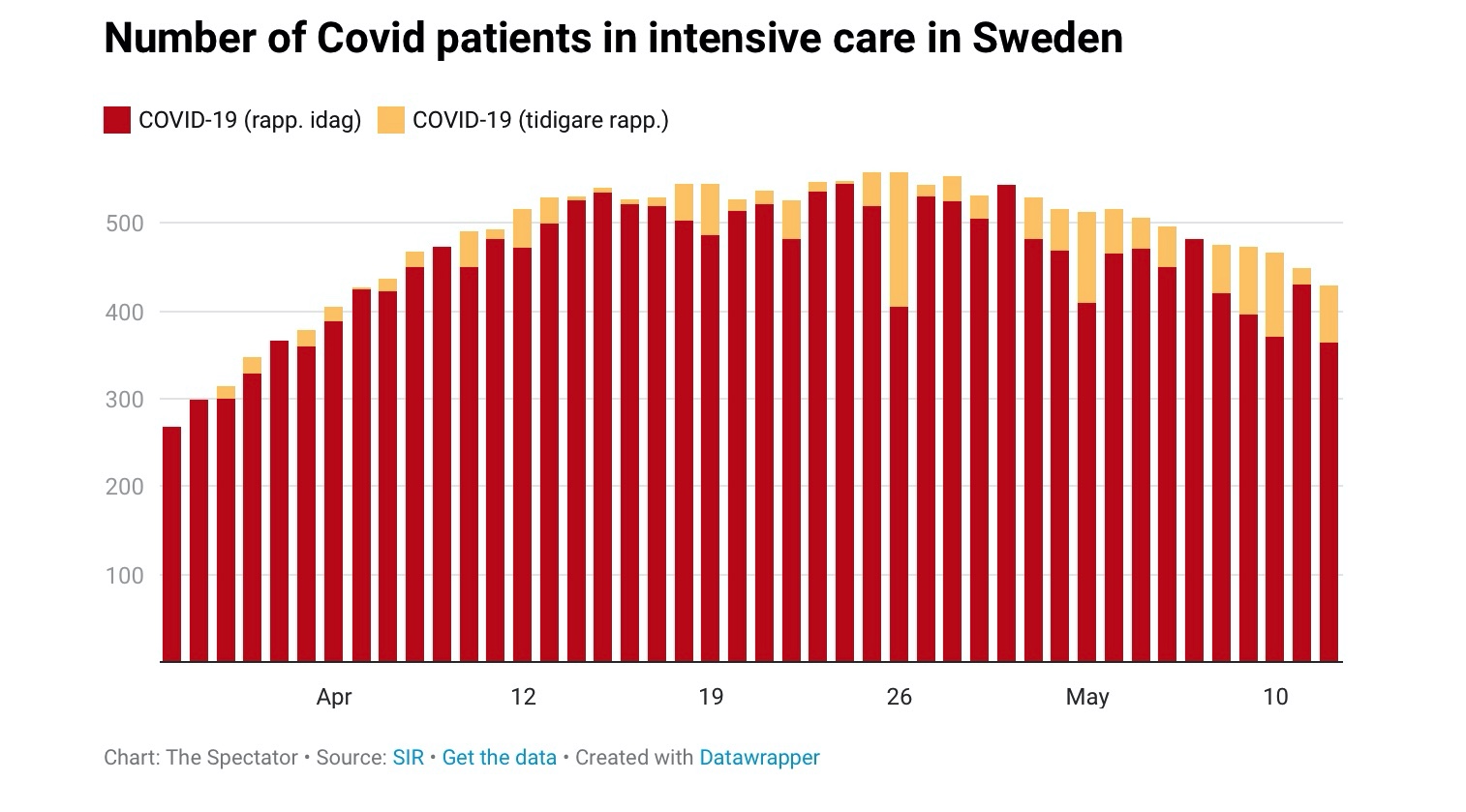Using computer models, doomsayers predicted disaster for Sweden if it didn’t lockdown. Swedish journalist Johan Norberg reports what has actually happened.
At last we’re getting a debate about Covid-19 modelling. When people finally got to look under the hood of the famous Imperial College study, they found twisted and tangled code. And most of the model’s predictions bear little resemblance to what is actually happening. Some defend the models by saying that their predictions turned out to be wrong only because governments imposed harsher restrictions than the coders expected.
If so, we have a perfect experiment. Sweden did not close borders, shut down schools, businesses, restaurants, gyms or shopping centres and did not issue stay at home orders. So it should be the one country where the models fit. Let’s see.
Maria Gunther and Maria Westholm at Dagens Nyheter, Sweden’s biggest daily, just took a look at two of the most influential models in Sweden, both were inspired by the Imperial College study and published on the preprint server MedRxiv in April. Both were used by critics to argue that the Swedish model would quickly break our health care system – and that we had to make a U-turn into lockdown, as Britain did.
Here are the models’ prediction of the number of Covid-19 patients in Swedish intensive care units, ICU (the highest curve is a model without lockdown):

Then came J. Gardner et al, ‘Intervention strategies against Covid-19 and their estimated impact on Swedish healthcare capacity’, 15 April. It was an even more pessimistic assessment, showing a peak of over 20,000 patients by early May – with an ICU requirement around 40 times the actual capacity.

Sweden’s Public Health Agency rejected the models. It instead planned for a worst-case scenario that was much less pessimistic, suggesting a peak around 1,700 ICU patients in the middle of May. Still more than three times more than the pre-pandemic capacity. Sweden, almost alone in the world, refused to lock down. And here is how things eventually worked out.

[…]Gardner et al predicted that Sweden would have 82,000 Covid-19 deaths by 1 July. That implies around 1,000 deaths every day since the paper was published in mid-April. However, the total number of Swedish Covid-19 deaths at the time of writing is 3,313.
One reason why the models failed is that they – just like most countries’ politicians – underestimated how millions of people spontaneously adapt to new circumstances. They only thought in terms of lockdowns vs business as usual, but failed to consider a third option: that people engage in social distancing voluntarily when they realise lives are at stake and when authorities recommend them to do so.
[…]The need for ICU beds in Sweden will be ‘at least 10-fold greater [than capacity] if strategies approximating the most stringent in Europe are introduced by 10 April’, wrote Gardner et al.
Those strategies were never introduced in Sweden, and yet, additional ICU capacity is 30 percent and the number of patients in intensive care has been declining for two weeks. The newly constructed field hospital in Stockholm, with room for hundreds of patients, has still not received any patients. It will probably never have to open. Here’s a zoomed-in graph of eventual ICU: numbering in the hundreds, not the predicted thousands.

[…]As countries plan how to leave lockdown, they can look at Sweden and ask: what happens if you don’t involve the police, if you don’t issue edicts about how many of your relatives or neighbours you can visit, and just ask people to be careful? Might that work? The Swedish experiment casts huge doubts on the models, and makes the case for trusting the public.
My question is were these models ever tested with real-life data, something by the way that’s fundamental to predictive analytics? For example, were the models fed data from the Spanish flu pandemic and results compared to what actually happened? What about SARS or even the bubonic plague? Surely if these models are worth their salt they could “predict “ how many people died during the bubonic plague.
It’s becoming increasingly obvious that we all went into lockdown on the basis of predictions that were greatly exaggerated. Also, as far as I know, none of the models sought to predict what would happen as countries lifted lockdown restrictions. Although admittedly for this we just need to ask, have the lockdowns eliminated COVID or contained it? Have we really flattened the curve or just stretched the number of deaths out along the time line at a huge economic cost? If the latter then you don’t need a computer to predict what’s going to happen as restrictions are lifted.
Our government had three choices: eliminate, contain, or take a harm reduction approach, like Sweden did. In my opinion, and considering the overwhelming cost of elimination, our government should have chosen containment. They chose elimination and this means that as we start mixing and mingling again, we can expect COVID deaths to rise once more, and we can all ask ourselves the question: What was the point?
If you enjoyed this BFD article please consider sharing it with your friends.









